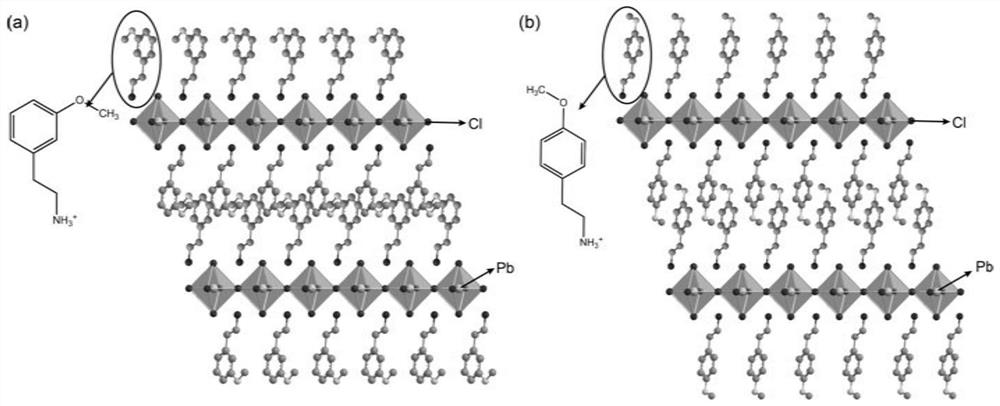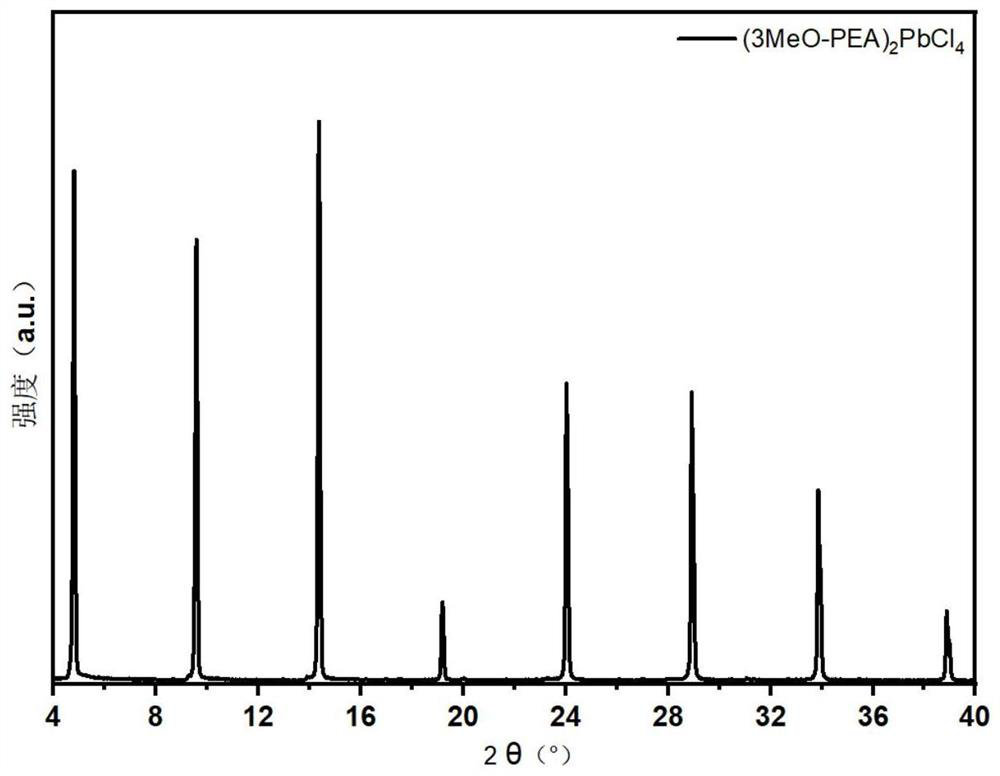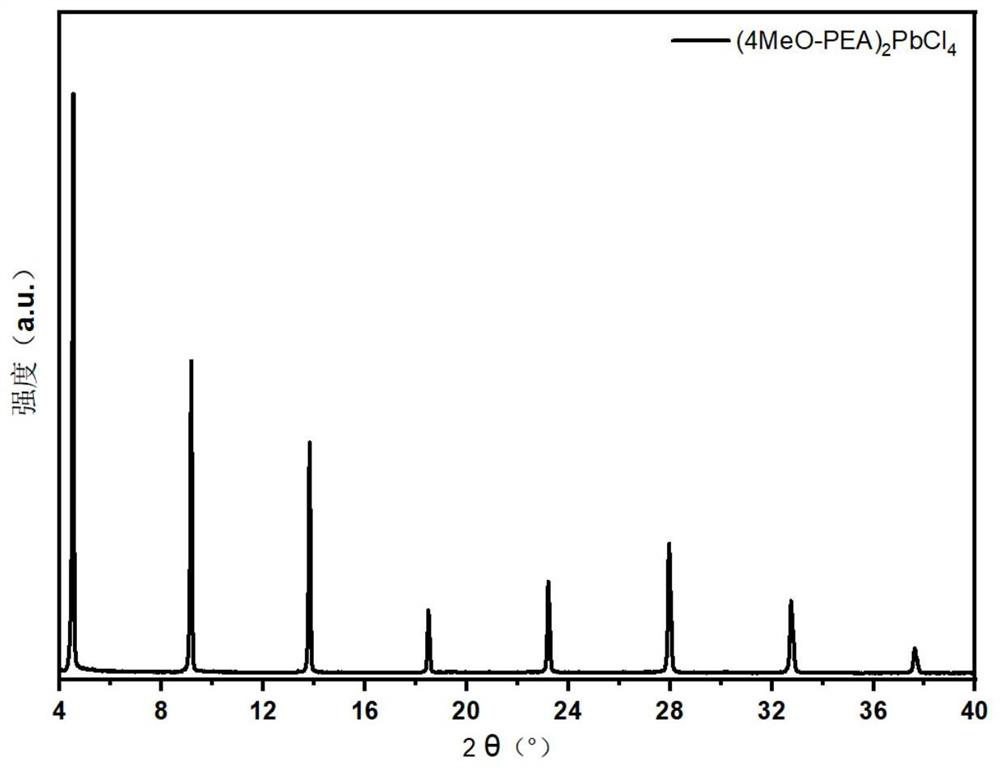Organic-inorganic two-dimensional perovskite room-temperature phosphorescent material as well as preparation method and application thereof
A room temperature phosphorescence and perovskite technology, applied in the preparation of organic compounds, luminescent materials, organic chemistry, etc., can solve the problems of oxygen collision quenching, low luminescence quantum efficiency, low intersystem crossing rate, etc., and achieve good stability. , the synthesis method is simple, the raw material price is cheap
- Summary
- Abstract
- Description
- Claims
- Application Information
AI Technical Summary
Problems solved by technology
Method used
Image
Examples
Embodiment 1
[0032] This example uses PbCl 2 and 3-methoxyphenethylamine to prepare organic-inorganic two-dimensional perovskite room temperature phosphorescent materials, the target product is denoted as: (3MeO-PEA) 2 PbCl 4 .
[0033] Wherein, the structural formula of 3-methoxyphenethylamine is:
[0034] The synthesis process of the organic-inorganic two-dimensional perovskite room temperature phosphorescent material in this embodiment includes the following steps:
[0035] Step 1, under the protection of an inert atmosphere, weigh 0.1112g (0.4mmol) PbCl 2 1. Draw 117ul (0.8mmol) of 3-methoxyphenethylamine into a two-necked bottle with a pipette gun, add 3ml of ethanol and 300ul (3.6mmol) of concentrated hydrochloric acid.
[0036] Step 2: Connect a condenser tube and condensed water to the two-necked bottle, heat and stir at 90° C. for 1.5 h.
[0037] Step 3: After all the reactants are dissolved, transfer the reaction solution to a sample bottle and cool slowly; wash the precip...
Embodiment 2
[0041] This example uses PbCl 2 and 4-methoxyphenethylamine to prepare organic-inorganic two-dimensional perovskite room temperature phosphorescent materials, the target product is denoted as: (4MeO-PEA) 2 PbCl 4 .
[0042] Wherein, the structural formula of 4-methoxyphenethylamine is:
[0043]The synthesis process of the organic-inorganic two-dimensional perovskite room temperature phosphorescent material in this embodiment includes the following steps:
[0044] Step 1, under the protection of an inert atmosphere, weigh 0.1112g (0.4mmol) PbCl 2 1. Draw 118ul (0.8mmol) of 4-methoxyphenethylamine into a two-necked bottle with a pipette gun, add 3ml of ethanol and 300ul (3.6mmol) of concentrated hydrochloric acid.
[0045] Step 2: Connect a condenser tube and condensed water to the two-necked bottle, heat and stir at 90° C. for 1.5 h.
[0046] Step 3: After all the reactants are dissolved, transfer the reaction solution to a sample bottle and cool slowly; wash the precipi...
Embodiment 3
[0060] The raw materials and synthesis process of this embodiment are basically the same as in Example 1, the difference is that PbCl 2 The molar ratio of 3-methoxyphenethylamine and concentrated hydrochloric acid is 1:1:8, and the volume ratio of concentrated hydrochloric acid and ethanol is 1:11. After mixing, heat and stir at 100°C for 1 hour. The test found that the luminous effect of the two-dimensional perovskite room-temperature phosphorescent material of this embodiment is consistent with that of Embodiment 1.
PUM
 Login to View More
Login to View More Abstract
Description
Claims
Application Information
 Login to View More
Login to View More - R&D
- Intellectual Property
- Life Sciences
- Materials
- Tech Scout
- Unparalleled Data Quality
- Higher Quality Content
- 60% Fewer Hallucinations
Browse by: Latest US Patents, China's latest patents, Technical Efficacy Thesaurus, Application Domain, Technology Topic, Popular Technical Reports.
© 2025 PatSnap. All rights reserved.Legal|Privacy policy|Modern Slavery Act Transparency Statement|Sitemap|About US| Contact US: help@patsnap.com



